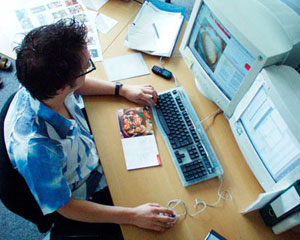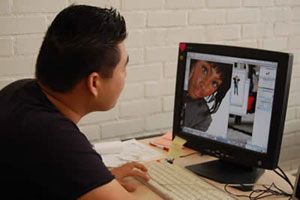Graphic Designer
Tasks & duties

Graphic designers may do some or all of the following:
-
discuss requirements of the project with their client
-
analyse the purpose of the project
-
discuss how to approach the project with colleagues
-
develop design ideas by researching and brainstorming with colleagues
-
prepare sketches, instructions and layout diagrams
-
suggest production methods, materials and costs
-
show design ideas to the client
-
receive client feedback and alter the design accordingly
Specialisations
Graphic designers may choose to specialise in a particular area of graphic design such as:
-
print publishing
-
web design
-
advertising
-
corporate design
Skills & knowledge

Graphic designers need to have:
-
knowledge of art materials and techniques
-
the ability to use colour and design effectively
-
expertise in printing and production methods
-
knowledge of advertising and marketing, and how people think and react to visual images
-
awareness of current market trends
-
artistic ability, including good sketching, drawing and painting skills
-
excellent written and oral communication skills
-
computer skills, including the ability to use computed-aided design (CAD) software
-
the ability to interpret clients' ideas and turn them into a suitable image format
-
good problem-solving skills
-
time management skills
Entry requirements
To become a graphic designer it is preferable to have a tertiary qualification in graphic design, media arts or visual communication. You are also required to have a portfolio of work.
Secondary education
Four years of secondary education is preferred. Useful subjects include art, art history, design, technical drawing, photography, English and maths.
Tertiary education
There are a number of tertiary institutions in New Zealand that offer qualifications in graphic design.
Training on the job
Skills are gained on the job. Graphic designers can attend workshops and seminars to keep their knowledge up to date. They may also add to their qualifications by studying in areas such as marketing, or new design software.
Graphic designers may also train as apprentices in the printing industry.
Useful experience
Useful experience for graphic designers includes:
-
art or design work or courses
-
advertising or marketing work
-
publishing or printing work
-
production work in the media
-
typographic work (for example, working with type, font and page layout)
Related courses
Computer Graphics
Fine Arts
Graphic Arts and Design Studies
For more information, please refer to Career Services.
Document Actions
